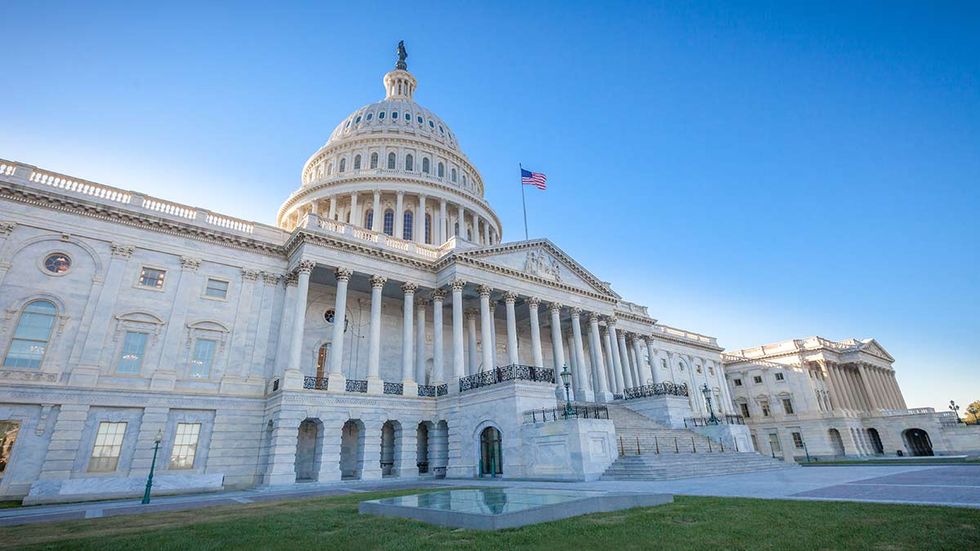
© 2024 Blaze Media LLC. All rights reserved.
Congress is looking at 40 bills to address the drug crisis it is fueling
June 13, 2018
Does a doctor ever commence a “comprehensive” treatment plan or do surgery without first diagnosing the nature and cause of the ailment? Worse, what if the doctor was involved in creating the problem and is now using random treatments – some good, some bad – to distract from that fact? Well, that is exactly what Congress is doing as it tackles 40 bills this week to address the misdiagnosed “opioid” crisis, which is a really an illicit drug crisis brought on by the DACA-driven surge in Central American teenagers and sanctuary cities beginning around 2013.
While some of the bills do address the illicit drugs, most of the legislative approach begins with the premise that this is fundamentally a health care and prescription crisis, when it is really exclusively a problem with illicit drugs – both opioids like heroin and non-opioids like cocaine and meth – brought in by open-border policies. The supply of drugs is meeting a deep-rooted problem in our society that stems from emotional and mental well-being and cultural problems, not from pain treatment.
This is why most victims are male, even though the majority of chronic pain patients are women. This is why most victims are younger, even though most chronic pain patients are older. This is why cocaine and meth are the fastest-growing drugs fueling the epidemic, even though they are not opioids. The supply is increasing from the border. This is why we’ve had drug problems for decades before Oxycontin was prescribed in the ’90s. According to the Congressional Research Service, drug cartels have been operating in this country since the ’40s. But now the cultural and emotional well-being of our population has deteriorated. Thus, commensurate with the supply of any drug and the decrease in price will be the increase in abuse. As we’ve chronicled in an exhaustive series on the truth about the opioid crisis, the epidemic came about suddenly and fatalities spiked precipitously right around the time of the Obama border surge.
Addiction specialist Sally Satel observes, “Contrary to common belief, prescription opioids do not pose a significant risk of addiction to the average person.” To the extent there is a subset at risk for addiction, they are “people with histories of addiction and those struggling with psychiatric conditions, and caution is particularly important with young adults.” A “Cochrane Review” study in 2010 showed that less than 0.5 percent of those properly prescribed pain patients developed an addiction within the first year of treatment.
In order to cover for the dual agenda of open borders and de-incarceration of drug traffickers, the government is now hurting pain patients who have never been prone to addiction. This is the true opioid crisis that deserves Congress’ attention. Opioids are already under strict control, hampering doctors and patients. Now is the time to focus more on the border and criminal alien distribution networks, not doctors and pain patients. Consider the following trends in the drug crisis:
- According to preliminary data from the CDC, fatalities from meth overdoses have spiked 121 percent from 2015 through October 2017, while cocaine deaths have surged by 140 percent. Prescription deaths have essentially remained flat over the past 18 months. There were an estimated 68,400 drug deaths from October 2016 through October 2017. It’s no wonder meth fatalities have been surging. You can plot the surge on a graph from the time Obama dismantled immigration enforcement and promised amnesty for younger migrants, as noted by the Washington Free Beacon.
- Prescriptions are already cut back. According to a new study by IQVIA Institute for Human Data Science, a health data firm, prescriptions of opioids have dropped by the largest percentage in 25 years. Just in 2017, opioid prescriptions dropped by 10.2 percent, while high-dose prescriptions plummeted 16.1 percent after dropping sharply in 2016 as well. That essentially wipes out the entire baseline increase of opioid prescriptions over the past 15 years.
- A recent AL.com article describing the latest trend in Alabama says it all. “Heroin and fentanyl deaths saw a small decline, while methamphetamine and cocaine deaths climbed. There was a significant decrease in prescription opioid deaths.” Remember, Alabama has the highest rate of prescriptions in the entire country! Yet the state has a low rate of prescription deaths, and it is getting lower. Heroin and fentanyl are the main problems but are finally peaking. And cocaine and meth are now surging. Yes, this is a Mexican drug cartel problem, not a problem with your doctor.
- The Cleveland Plain Dealer reported this week that in Ohio, one of the states worst hit by the epidemic, just 14 percent of overdose deaths were due to prescription drugs, the lowest proportion since 2009. And as we’ve noted before, many of those deaths are reported on toxicology reports as prescription-related, even though they were often illicit drug abusers who mixed illicit drugs, sleeping pills, and alcohol with the prescriptions.
- Florida, the home of many seniors, which was not one of the harder-hit states at the beginning of the epidemic, is now experiencing one of the sharpest increases in fatalities. Drug overdose deaths rose by 68 percent from February 2016 to June 2017, according to preliminary data from the CDC, which believes the numbers are “likely underreported due to incomplete data” in 2017. But with the plummeting of prescriptions, according to the Florida Department of Health, the number of people admitted to treatment programs for prescription drug addiction declined by 79.4 percent from 2011 to 2016, while heroin treatment admissions spiked by 142.6 percent. But the fastest-growing killer in Florida is cocaine, which is all coming from the drug cartels and is not even an opioid.
The bottom line is that we could un-invent every single prescription painkiller and it would do nothing to address the core problem in our culture: illicit drugs.
Why won’t Congress hold a single hearing on what the drug crisis is and isn’t and better study the latest trends before legislating the issue to death? If legislators wanted to solve the problem, they’d recognize that the best “opioid legislation” is ending all incentives for cross-border migration and sanctuary cities. This would bankrupt the networks that are responsible for the overwhelming majority of drug fatalities in America. Yet the Republican party is hell-bent on the very amnesty that served as the impetus for the drug epidemic in the first place.
How can we solve a problem we fail to properly identify? How many more pain patients need to suffer so the politicians can cover for open borders, sanctuary cities, and drug traffickers?
#mc_embed_signup{background:#fff; clear:left; font:14px}
/* Add your own MailChimp form style overrides in your site stylesheet or in this style block.
We recommend moving this block and the preceding CSS link to the HEAD of your HTML file. */
Want to leave a tip?
We answer to you. Help keep our content free of advertisers and big tech censorship by leaving a tip today.
Want to join the conversation?
Already a subscriber?
Blaze Podcast Host
Daniel Horowitz is the host of “Conservative Review with Daniel Horowitz” and a senior editor for Blaze News.
RMConservative
more stories
Sign up for the Blaze newsletter
By signing up, you agree to our Privacy Policy and Terms of Use, and agree to receive content that may sometimes include advertisements. You may opt out at any time.
© 2024 Blaze Media LLC. All rights reserved.
Get the stories that matter most delivered directly to your inbox.
By signing up, you agree to our Privacy Policy and Terms of Use, and agree to receive content that may sometimes include advertisements. You may opt out at any time.



